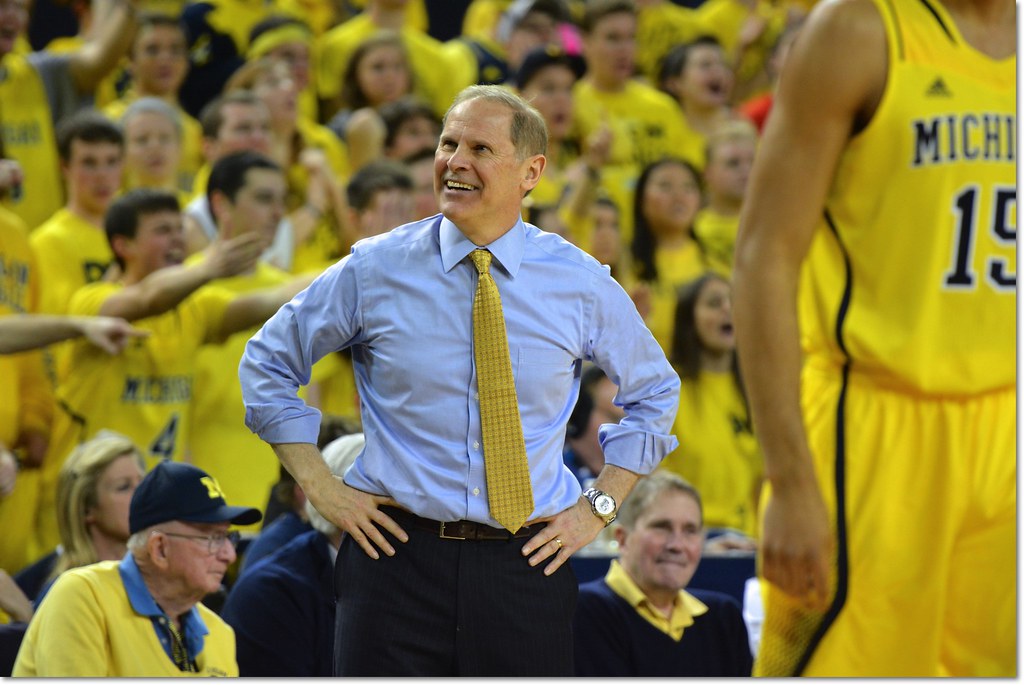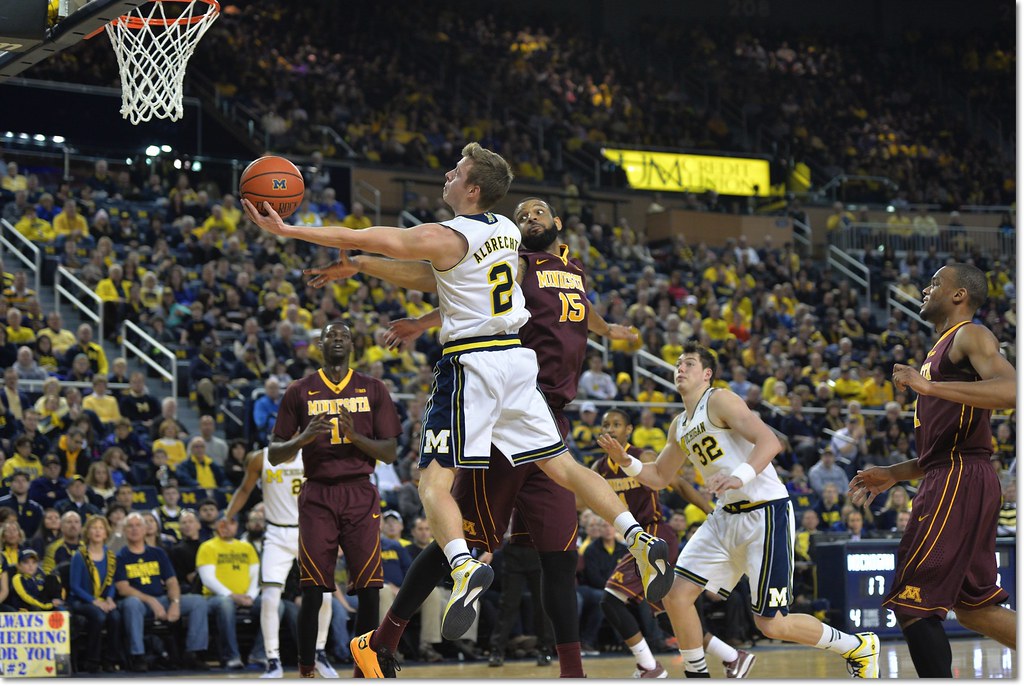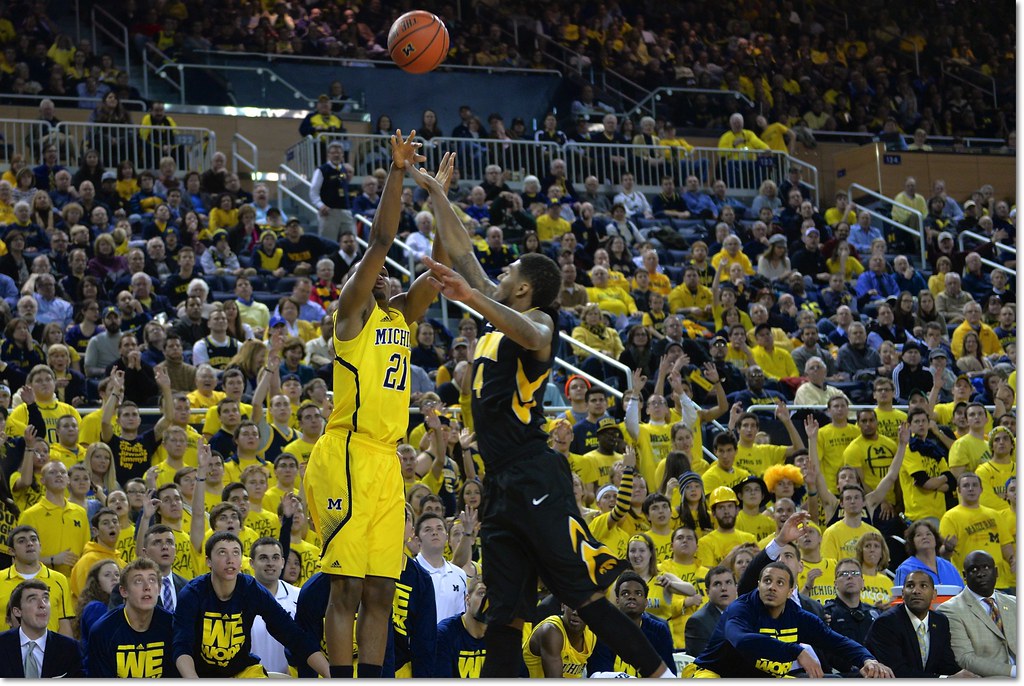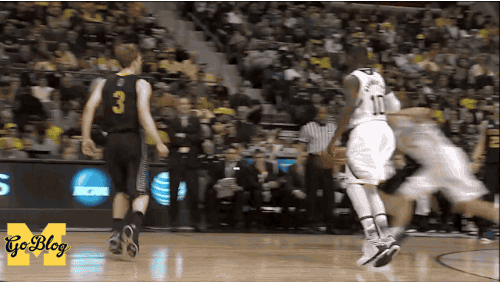The All-Beilein Teams: Off The Bench


[Bryan Fuller]
John Beilein has spent ten seasons in Ann Arbor. As of the most recent, he's the winningest coach in program history with 215. He snapped Michigan's post-sanction tournament drought in 2009, the first of seven NCAA appearances with the Wolverines, three of which have extended at least into the second weekend.
In recognition of the above, as well as the need for offseason #content, I've put together a series of All-Beilein teams, inspired by this twitter post and the ensuing conversation. My guidelines:
- I'm attempting to put together the best possible lineups, which isn't necessarily the same as picking the best individual players at each spot.
- I'm choosing individual player vintages (i.e. 2013 Trey Burke). A player can only be chosen once for each category, but different player years (i.e. freshman bench gunner 2014 Zak Irvin and well-rounded senior 2017 Zak Irvin) can be eligible for separate categories.
- Eligibility for certain categories, like today's best bench players, may be slightly fudged because of the limited pool of players.
I'm not putting too many constraints on myself for this exercise since the point is to let our imaginations run wild. Without further ado, here's the first All-Beilein team, which wasn't easy to put together given Beilein's tendency to roll with a tight rotation: the All-Bench squad.
POINT GUARD: 2014-15 SPIKE ALBRECHT

The YMCA Scoop. [Fuller]
We start with the fudged guidelines right away, as Albrecht ended up starting 18 games in this particular season because of Derrick Walton's foot injury. This was the best version of Spike, however, and any of the previous versions would also have earned this spot; between injuries, early draft departures, and the occasional recruiting miss, depth at the point has been hard to come by in the Beilein era.
For the better part of four years, Spike was the exception to that rule. He was an excellent passer. He covered for being undersized by displaying a knack for jumping passing lanes. He did donuts in the lane. He broke out the old-man scoop for critical layups. Most importantly to Beilein's offense, he had defense-extending range and the confidence to hit big shots, after which he just might do the Sam Cassell big balls dance:

Spike was a 41% three-point shooter at Michigan. While he probably would've earned this spot based on one particular half of basketball alone, he did a whole lot more than just light up Louisville.
Honorable Mention: 2008-09 CJ Lee. Another player whose selection is borderline cheating since Lee finished the season as the starter, but he came off the bench in twice as many games as he started as Beilein searched for the right guy between football-player-turned-scholarship-point Kelvin Grady and two walk-ons, Lee and David Merritt. Lee eventually won out by being the most reliable offensive player and best defender.
[Hit THE JUMP.]
WING: 2013-14 ZAK IRVIN

Fire away. [Fuller]
Freshmen rarely arrive as complete players, and Zak Irvin was no exception. On a stacked 2013-14 team, though, he could focus on one thing: shooting the hell out of the basketball. Just under 75% of Irvin's attempts came from beyond the arc; he sank them at an impressive 43% clip. He wasn't bashful, either: when he was on the court, he took 25.9% of Michigan's shots, easily the highest rate on the team.

Irvin was Michigan's version of Vinny "The Microwave" Johnson, and like the Pistons archetype, Irvin had a way of coming up big in key situations. He had eight points in 15 minutes in the dramatic overtime win at Purdue, then nine in only 11 minutes to help Michigan edge Tennessee in the Sweet Sixteen. He may not have created many shots, but he fits just fine as a lethal spot-up shooter in this lineup.
Honorable Mention: 2010-11 Matt Vogrich. Vogrich lost his playing time and outside shooting touch in his final two years, so we often forget that he was a useful reserve as a sophomore. On a 21-win tournament team, Vogrich played a third of the team's minutes and hit 39% of his threes in a Just A Shooter™ role.
WING: 2010-11 STU DOUGLASS
When Tim Hardaway Jr. arrived on campus, Douglass took one for the team and moved to a super-sub role for his final two years. As a junior, he only started 12 of 33 games, but he averaged over 30 minutes. While Douglass didn't measure up to (freshman) Irvin as a pure shooter, he still posed a threat from the outside and was a more well-rounded player. He pushed his two-point percentage near 50, moved the ball well, and played solid defense. While Douglass was a better player as a senior, he finished that season as the starter over the next player in this lineup, and the less-efficient junior version of Stu has the MSU dagger and dunk against Tennessee to his credit.
Honorable Mention: 2015-16 Aubrey Dawkins. If you're just looking at the stats page, Dawkins appears to merit inclusion on the first team. He hit 56% of his twos and 46% of his threes, rarely turned the ball over, and chipped in on the glass. The highlights would indicate the same; Dawkins could rise. The reason Dawkins qualifies for this list in the first place is why he's only honorable mention here: he was benched in favor of Duncan Robinson for being a noticeably inferior defender.
STRETCH FOUR: 2011-12 EVAN SMOTRYCZ

Not pictured: Lobstryczs. [Eric Upchurch]
Smotrycz began this season as the starter but finished it coming off the bench as Beilein moved Douglass back into the lineup and tasked Zack Novak with being the grittiest 6'4" power forward of all time. Smotrycz was better-suited to the bench role; his 44% three-point shooting was his strength, but he could also finish inside against smaller defenders, and he posted impressive rebounding rates on both ends of the floor. He also earns bonus points for inspiring the best player-specific Maize Rage costumes: Smotrycz's Lobstryczs.
Honorable Mention: 2016-17 Duncan Robinson. As you may have noticed, this team wouldn't be the strongest on the defensive end of the floor, but they sure can shoot. Robinson reaquainted himself with the sixth-man role this season when DJ Wilson broke out as a bona-fide NBA prospect. He was his usual sharpshooting self, making 43% of his threes, and improved as a finisher off cuts. He played better defense, too, though he'd set a low bar there.
CENTER: 2012-13 MITCH MCGARY

Big Puppy on the loose. [Fuller]
The most-prized recruit to sign with Beilein, McGary is the clear star of this group. He only started twice as a freshman in the regular season before getting unleashed in the NCAA Tournament, where he put together the best run of play we've seen from a Michigan center under Beilein.

McGary scored in bunches, tallying 20+ against VCU and Kansas. He was a hellbeast on the boards, grabbing four or more offensive rebounds in three tournament games. After never tallying more than two assists in a college game, he had six operating from the middle of Syracuse's vaunted 2-3 zone in the Final Four. In the previous game, he had five steals against Florida. He protected the rim. He led fast breaks. He threw Unseldian outlet passes. He made inexplicably beautiful hustle plays. He set bone-rattling screens. He survived an unprovoked dick punch.
Freshman McGary was a supernova. He burned out after just eight more games, leaving us with a 6'10", 250-pound hole of what-if.
Honorable Mention: 2013-14 Jon Horford. Michigan fans ended up appreciating Horford more in his absence. In his sophomore and junior years, Horford did the typical big man stuff effectively; he made 57% of his shots, rebounded well on both ends, and was the team's best shot-blocker in that span. Horford, who never quite saw eye-to-eye with Beilein, grad-transferred to Florida just as he was in line to start; instead, the 2014-15 squad had to make do with Mark Donnal, Ricky Doyle, and Max Bielfeldt.
I just love watching the film clips. I'll leave it to you guys to argue the positions.
perhaps an "all inspiration" team, which would be manned by guys like Austin Hatch, Maverick Morgan, & Zack "Aneurysm" Novak
Don't forget the mighty floor slaps.
I love how Ace basically says he is playing Calvinball, and there is an uproar that he didn't strictly follow the rules (from some who did not even understand the basic premise).
It's Calvinball, folks. There's your premise.
The whole point of the exercise was to have fun, and the thread goes pedantic.
Imagine if the MGoBlog community got together for a party. There would be fistfights about proper evaluations of the punch bowl's pad level.
WHERE IS CARIS LEVERT??? NOT EVEN AN HONORABLE MENTION AT EITHER WING SPOT???
the one year he didn't start, he averaged 2.3 ppg
April 13th, 2017 at 10:02 PM ^
April 13th, 2017 at 10:17 PM ^
You may want to re-read the headline again. Trey was always a starter.
April 13th, 2017 at 10:28 PM ^
April 13th, 2017 at 10:02 PM ^
April 13th, 2017 at 11:09 PM ^
has a lotta white boys
Comments